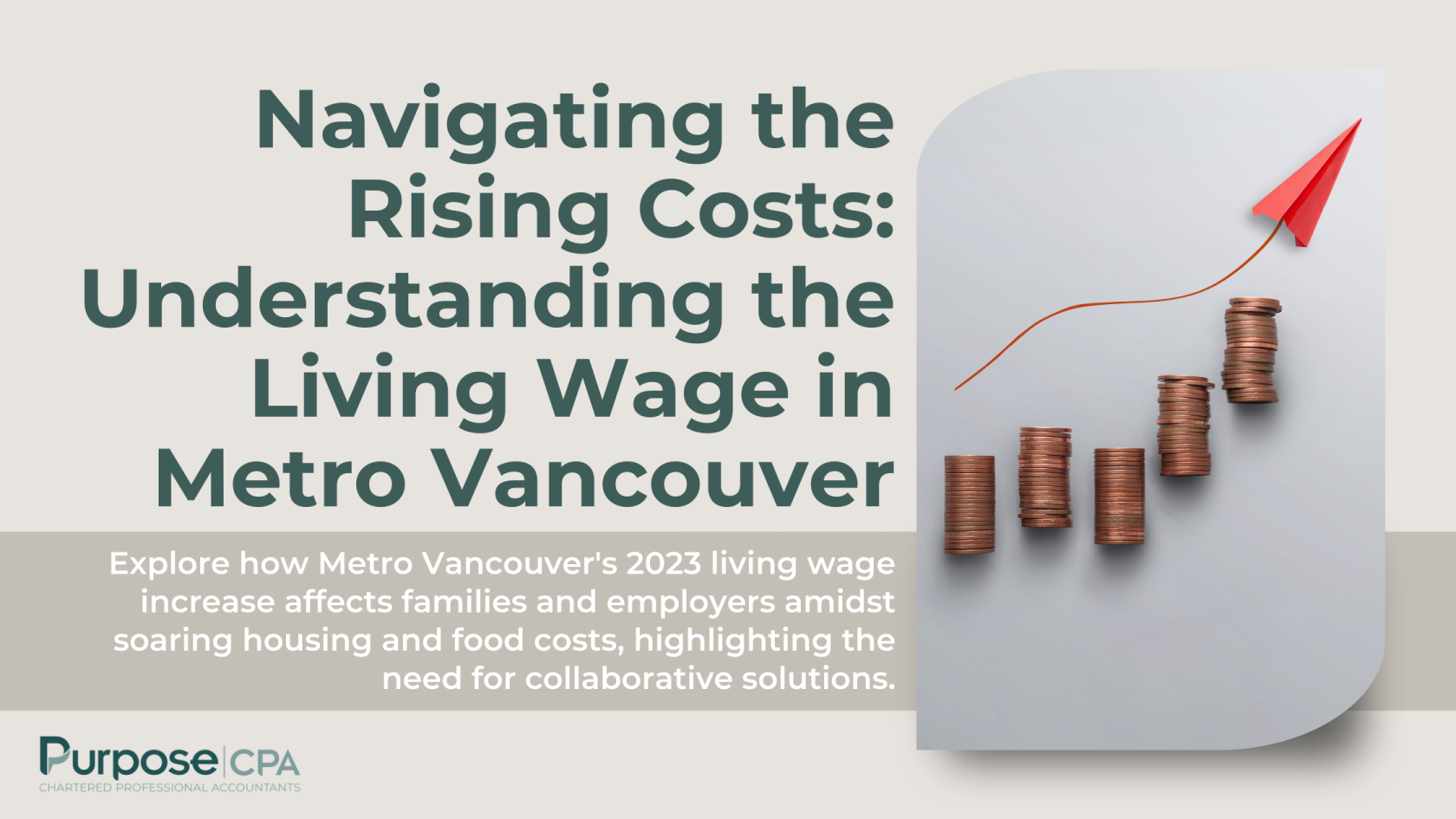In our last blog, we explored how the living wage in BC is calculated using the Canadian Living Wage Framework. It’s a key measure that ensures financial stability for working families. Now, Metro Vancouver’s living wage has seen a significant rise in 2023, reflecting the escalating costs of essential living expenses. In this blog, we will dive into the reasons behind this increase, break down a typical family budget, and discuss how both employers and the government can help address these challenges. With living costs continuing to soar, understanding these dynamics is crucial for ensuring economic security for families across BC.
Who is it for?
- Business owners and managers in Metro Vancouver
- HR professionals
- Policy makers
- Employees seeking to understand wage standards
Keep reading if you are…
- Interested in understanding wage dynamics in Metro Vancouver
- Seeking strategies to support employees better
- Concerned about the rising cost of living
- Exploring ways to contribute to economic stability
- Looking to implement fair wage practices
Why does this matter to me? Understanding the rising living wage and its implications can help you make informed decisions that support both your business and your employees, ensuring economic stability and a productive workforce.
TLDR:
In 2023, Metro Vancouver’s living wage rose to $25.68/hr, up 6.6% from 2022, driven by soaring costs of food and shelter. A typical family budget breakdown shows critical expenses like housing escalating by 16.6%. Despite government benefits, the burden on families persists. Employers and policymakers must collaborate to ensure wages meet living costs, supporting economic stability and workforce productivity.
Navigating the Rising Costs: Understanding the Living Wage in Metro Vancouver
The Increase in the 2023 Living Wage
In 2023, the living wage in Metro Vancouver increased to $25.68 per hour, up from $24.08 per hour in 2022—a 6.6% rise. This increase is driven by significant hikes in essential living costs, particularly food and shelter, which are outpacing general inflation. Despite some relief from increased government benefits and public investments aimed at reducing child care fees and providing dental benefits for children, the financial pressures on families remain high.
Breaking Down a Basic Family Budget
To understand the living wage, it’s essential to examine a typical budget for a two-parent family with two children. Here’s a breakdown:
- Food: $1,183
- Shelter: $2,895
- Child care: $703
- Transportation: $553
- Non-MSP health care: $279
- Phone & internet: $173
- Clothing & footwear: $176
- Parents’ education: $108
- Contingency fund: $300
- Other household & social participation: $1,024
This budget illustrates the bare minimum required to maintain a basic standard of living, excluding costs like debt repayment, savings, home ownership, or substantial recreation and entertainment.
Rapidly Escalating Living Costs
The most significant contributor to the rising living wage is the cost of shelter. In 2023, shelter costs jumped by 16.6%, adding an extra $411 per month to the family budget. The average monthly cost of $2,895 includes rent, utilities, and tenant insurance for a modest three-bedroom apartment.
Shelter Expense
Shelter has consistently been the largest expense since the living wage calculation began in 2008. The rental market’s rapid growth, outpacing the supply of affordable housing, exacerbates this issue. While rent control measures have helped those with stable housing, newcomers and families needing to move face steep rent increases and low vacancy rates. This situation is particularly challenging in British Columbia, which leads the country in eviction rates, partly due to its reliance on the secondary rental market.
Collective Effort of Employers and Government
Achieving a living wage is not solely the responsibility of employers; it requires a combined effort from both employers and government.
Employers
Employers play a crucial role by ensuring wages are sufficient to support families. This is especially important as the cost of living rises sharply. Employers can also offer benefits that reduce out-of-pocket expenses for families, such as extended health and dental coverage, subsidized transit passes, and additional paid sick time and vacation. These benefits can lower the hourly wage required to meet family expenses and contribute to overall economic stability and productivity.
Government Support: Child Benefit
Government transfers, such as the Canada Child Benefit and the BC Affordable Child Care Benefit, provide significant support to families. In 2023, the BC Affordable Child Care Benefit and other related public investments helped to substantially reduce child care expenses for many families. However, while these reductions provided much-needed relief, the overall decrease in child care costs was more than offset by the rapid rises in other essential expenses, such as housing and food.
The 2023 increase in the Metro Vancouver living wage reflects the region’s rapidly rising cost of living, particularly in housing and essential services. While government benefits provide some relief, the collaboration between employers and policymakers is crucial in ensuring that wages keep pace with these costs. Paying a living wage not only supports families but also stimulates the local economy and contributes to a healthier, more productive workforce. Understanding these dynamics is essential for both workers and employers in navigating the economic landscape of Metro Vancouver.
Source:
extension://elhekieabhbkpmcefcoobjddigjcaadp/https://policyalternatives.ca/sites/default/files/uploads/publications/2023/11/ccpa-bc-Working-for-a-Living-Wage-2023.pdf




